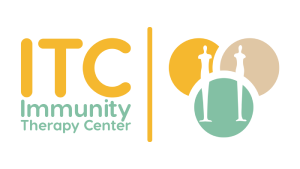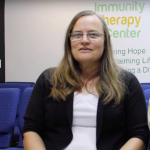Medically Reviewed by: Dr. Bautista
Our Editorial Policy
Updated on: November 16, 2019
About Leukemia
Leukemia and lymphoma are oftentimes confused, and it’s easy to understand why. In addition to sounding alike, both are cancers caused by excessive and abnormal white blood cells. But there’s a major, grim difference between the two: whereas lymphoma is highly manageable, the treatment process for leukemia is a harrowing one.
Though treating leukemia is a tough and complex battle, modern medicine has prevailed with several promising treatments (success rates that continue to soar). Read on for a comprehensive overview of leukemia, why it’s such a daunting diagnosis, and to discover the best alternative treatment options for fighting against the disease.
What Causes Leukemia?
To better understand what causes leukemia, it’s important to know that blood cells in the human body are comprised of three types of cells:
- Red blood cells that carry oxygen
- White blood cells that fight against infection
- Platelets that enable blood to clot
Your body is constantly churning blood cells into your bone marrow by the billions, the vast majority of these cells being of the red variety. With leukemia, however, your body gets fooled into thinking it needs way more white blood cells than it actually needs. As a result, most of your body’s white blood cells are rendered ineffective, plus your body stops producing the red blood cells and platelets necessary for survival.
Frustratingly, scientists today remain unsure as to how exactly leukemia causes the body to experience this aberration.
Are There Different Types of Leukemia?
Leukemia can appear in the body in one of two ways:
- Chronic – By default, chronic leukemia is the lesser of two evils. It occurs when a sufficient number of legitimate blood cells are able to remain in the body’s bloodstream and combat the ramifications caused by the underdeveloped ones. The consequences are still serious but occur at a delayed rate.
- Acute – This occurs when your body becomes overrun with immature blood cells, and as a result, can no longer perform vital functions. Acute leukemia rears its ugly head in rapid and dramatic ways.
Symptoms of Leukemia
Leukemia comes with a whole laundry list of warning signs, including:
- Easy bruising and bleeding, including recurring nosebleeds
- Anemia
- Persistent fatigue
- Frequent or severe infections
- Fever and chills
- Dramatic weight loss
- Swollen lymph nodes
- Enlarged liver or spleen
- Pain or tenderness in the bones
- Profuse sweating, especially at night
- Petechiae, a condition that disseminates tiny red splotches on your skin
The severity of these symptoms varies depending on which type of leukemia you have.
Who is Affected by Leukemia? And What are the Risk Factors?
Leukemia can affect anyone, regardless of age. It’s often associated with children due to the fact leukemia in children is the most common cancer among their age group, but the disease is actually diagnosed 10x more frequently among adults. It’s also more common among men than women, and among Caucasians than any other race.
Since no one knows for sure what causes leukemia, it’s impossible to determine if and how it can be prevented. Experts have, however, been able to identify a few risk factors, including:
- Smoking and tobacco use
- Family history of leukemia
- Past chemotherapy treatment or other procedures that involve exposure to radiation
- Prolonged exposure to benzine and similar chemicals
- Genetic disorders such as Down Syndrome
What are the Stages of Leukemia? And How Can It Be Treated?
Because the harsh symptoms resulting from acute leukemia typically require immediate entry into chemotherapy ASAP, acute leukemia isn’t staged. Chronic leukemia, however, is diagnosed in the following five stages:
- Stage 0 – There are an excessive number of white blood cells in the blood stream, but it hasn’t caused any symptoms yet.
- Stage I – Lymph nodes have become swollen due to the excessive production of white blood cells
- Stage II – The liver and spleen become swollen along with various lymph nodes.
- Stage III – The white blood cells overcrowding the red blood cells hinders the body’s capacity to produce oxygen, resulting in anemia.
- Stage IV – The body’s bloodstream now has an insufficient number of platelets.
In all cases, leukemia is typically treated through chemotherapy, which occurs according to the following three-step process:
- Induction – This is intended to get the patient into a state of remission as quickly as possible.
- Conditioning – Measures are put in place to prevent the abnormal cells from returning.
- Transplantation – A stem cell transplant is initiated to help the patient strengthen their immune system and stimulate the growth of healthy bone marrow.
Alternative Treatment for Leukemia
Treatment for cancerous tumors depends on the severity and location of the cancer, but typical types of treatment are comprised of surgery to remove the tumors, radiation therapy, and chemotherapy. These types of treatment can be effective, but they often come with negative side effects that impact your quality of life. Luckily, options like a natural treatment for leukemia can help mitigate these side effects and support greater recovery without harming your immune system.
Alternative therapies can support the immune system, safeguard healthy cells, and promote overall well-being. Here are strategies to consider:
Nutritional Support: A well-balanced diet rich in vitamins and minerals can enhance the immune system’s function. Incorporate foods like fruits, vegetables, and lean proteins to support your body’s natural defense mechanisms.
Herbal Remedies: Some alternative therapies involve the use of specific herbs known for their potential to boost the immune system. Examples include echinacea and astragalus, which may help maintain healthy white blood cell counts.
Mind-Body Practices: Techniques such as meditation and yoga can reduce stress and improve overall well-being. Stress reduction can be crucial in maintaining healthy cells while undergoing treatment.
Acupuncture: This alternative treatment may help alleviate some side effects of leukemia treatments, potentially supporting your body’s normal cell function.
Supplements: Consult with a healthcare professional before taking any supplements, but certain vitamins and minerals like vitamin C and zinc are known to contribute to immune system health.
Exercise: Regular physical activity can stimulate the production of white blood cells and improve the circulation of immune cells throughout the body.
Clinical Trials: While not a natural remedy, participating in clinical trials for new leukemia treatments can provide access to cutting-edge therapies that may benefit your condition.
Probiotics: Maintaining a healthy gut microbiome through probiotics can indirectly support the immune system and overall health.
Stress Reduction: Chronic stress can weaken the immune system. Explore stress-reduction techniques like mindfulness, deep breathing exercises, or progressive muscle relaxation.
Adequate Rest: Prioritize sleep to help your body repair and regenerate, supporting the health of normal cells.
Holisitic Treatment for Leukemia in Mexico
Immunity Therapy Center offers a wide range of holistic treatments for leukemia, that are customized to your personal health, medical history, and cancer progression. Our team works directly with you to ensure that you receive a personalized treatment plan that suits your specific needs. One-on-one consultations with our staff ensure that you are treated as an actual person and patient to provide you with the most effective alternative therapy options. To learn more or to schedule a free consultation, please contact us today.
Resources
1) “What is Leukemia” by editorial staff at WebMD
https://www.webmd.com/cancer/lymphoma/understanding-leukemia-basics#1
2) “Statistics on Leukemia and Other Blood Cancers” by editorial staff at Leukemia Research Foundation
https://allbloodcancers.org/statistics/
3) “Leukemia” by editorial staff at Harvard Health Publishing
https://www.health.harvard.edu/cancer/leukemia
Therapies we useAt Immunity Therapy Center, our goal is to provide objective, updated, and research-based information on all health-related topics. This article is based on scientific research and/or other scientific articles. All information has been fact-checked and reviewed by Dr. Carlos Bautista, a Board Certified Medical Doctor at Immunity Therapy Center. All information published on the site must undergo an extensive review process to ensure accuracy. This article contains trusted sources with all references hyperlinked for the reader's visibility.
Customized Care For the Body And The Mind
Discuss Your Custom Alternative Treatment Plan With Our Team Today
Hear from Our Patients
See why the Immunity Therapy Center is a trusted name for medical tourism and cancer treatment centers in Mexico.




